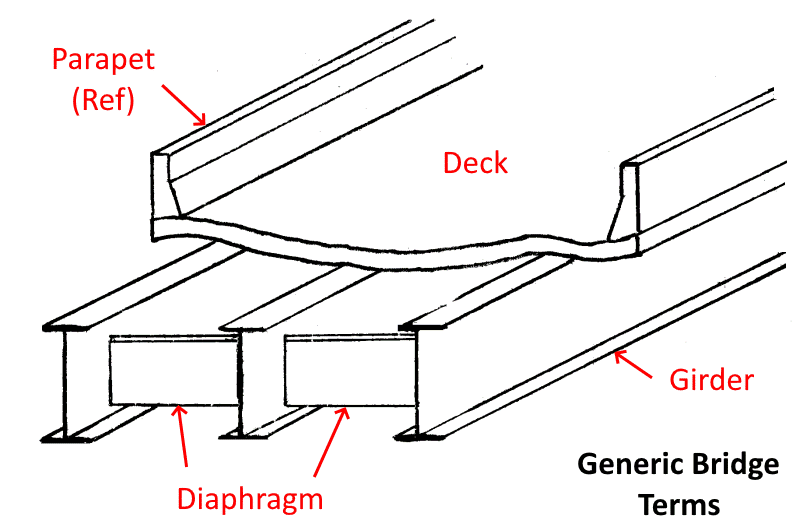I agree with human909 that designing/checking the end connections for both pinned and fixed end conditions would be conservative and essentially envelope the problem. The problem here is that the magnitude of the fixed end moments we are seeing are relatively high, and will cause a significant increase in the size of the end connection and number of bolts that will need to be installed. As it currently stands, our bridge is 365 long x 643 wide and we have 1,185 steel plate diaphragms. As SlideRuleEra indicated, the extreme width of the bridge is causing very high forces in our transverse members, which is typically not seen in less wide, more 'finite' bridges.
The main issue here is that there seems to be no clear direction as to whether a deep bolted web connection can be considered a 'pinned' or a 'fixed' connection. We agree that due to the depth of the connections, there will be some moment transfer, but we just don't know how much that will be and we also don't think it will be near the same as a fully restrained moment connection. Section 10 of AISC Steel Construction Manual, Design of Simple Shear Connections, seems to agree with this. In the Force Transfer section, it states that "while simple shear connection do actually possess some rotational restraint, this small amount can be neglected and the connection idealized as completely flexible." Further in Section 10, for Single Plate Connection, there is a sub-section for 'Extended Configuration'. Again, this is referring to a simple shear connection and states that the procedure can be used to determine the strength of single plate shear connections with multiple vertical rows, and in the dimensional limitations, is also states that the total number of bolts is not limited.
Finally, in Section 10, there is another section on Shear Splices. Again, AISC considers at bolted web splice a simple shear connection. In this case however, AISC does discuss designing for an eccentric moment, however this is due to connection geometry, not direct applied moment.
AISC seems to consistently consider bolted connections through a web only as as simple shear connections and that the magnitude of moment transferred through such connections will be small and can otherwise be neglected. It seems like a lot of others disagree with this, which we can see how and why, however, we have not been able to find any other references for direction as to how best to treat or design these type of connections. Most of what we have found is vague and doesn't give clear direction.
Thank you for everyone's help and input on this!

